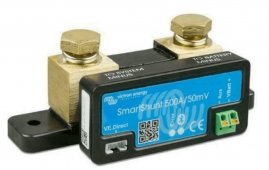The switched MOSFET's are connected between B- and P- so when you short the B- to P- the switched MOSFETs are bypassed that is why you get the current to flow, then when you remove the jumper the current stops flowing because the switched MOSFET's are not turned on by the BMS circuit.
I do not know which DALY BMS you have, but here is the link showing how to reset the Smart DALY BMS.

DALY BMS Issue BMS P- voltage = 8v vs. terminal voltage = 13v
Hi everyone, My setup: BMS: DALY BMS 4S 12V 120A Cells: 277ah ETC My issue: When multimeter connected at P- on BMS and main positive it reads a very low voltage: around 8.36v (see pictures) Although when multimeter connected directly on the main positive and main negative it reads 13.36v...diysolarforum.com
I have the non-smart 250amp BMS with a fan.



